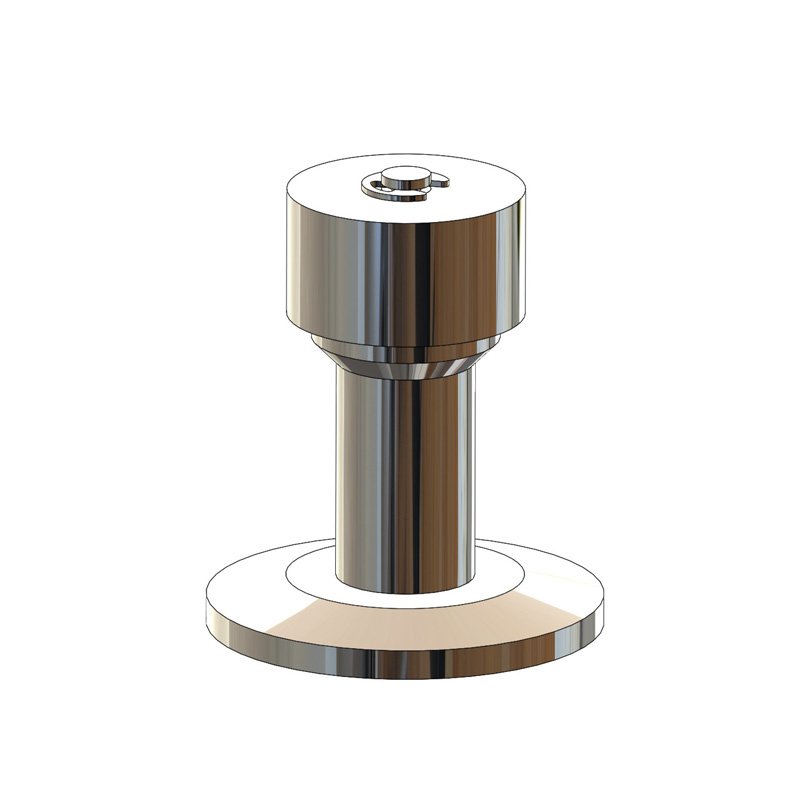Flanges and Fittings
Description:
Flanges and Fittings play crucial roles in the construction and operation of vacuum systems. They provide means for connecting different components, chambers, and instruments within the vacuum system while maintaining a high vacuum or
ultra-high vacuum environment.
Some details about fittings and flanges commonly used in vacuum systems:
- Flanges: Flanges are flat, typically circular plates with bolt holes around the perimeter. They are used to connect vacuum chambers, components, and instruments together. Flanges come in various sizes, shapes, and materials to accommodate different vacuum system requirements. Common materials for flanges include stainless steel, aluminum, and glass.
- Fittings: Fittings are components used to connect different vacuum system elements such as vacuum pumps, gauges, valves, and chambers. They come in various shapes and sizes to accommodate different vacuum system configurations. Common types of fittings include elbows, tees, crosses, reducers, and adapters.
Enquiry Now
Types of Flanges:
- KF flanges are commonly used in low to medium vacuum applications. They feature a quick-release clamp mechanism that allows for easy assembly and disassembly of vacuum components.
- CF flanges are designed for high vacuum and ultra-high vacuum applications. They use knife-edge seals and copper gaskets to create a high vacuum-tight seal. CF flanges are bolted together using stainless steel bolts and nuts.
- ISO-K flanges are standardized vacuum flanges often used in industrial vacuum systems. They feature a rubber O-ring seal and clamping system for easy assembly.
- Similar to ISO-K flanges, ISO-F flanges are also standardized vacuum flanges but feature a metal gasket seal instead of an Oring seal.
Related products
Custom Vacuum Chambers
A custom vacuum chamber refers to a specialized enclosure designed to create and maintain a low-pressure environment, typically for industrial processes, scientific research or testing purposes.
Applications:
Custom vacuum chambers are used in a wide range of applications across various industries, including semiconductor manufacturing, materials science research, aerospace testing, and vacuum coating processes. The versatility and customizability of these chambers make them indispensable tools for numerous scientific and industrial endeavours.
Overall, designing and constructing a custom vacuum chamber requires careful consideration of various factors to ensure that the chamber meets the specific requirements of the intended application while maintaining safety and reliability.
Ours great team has vast experience to design, build, and operate custom vacuum chambers effectively.
Enquiry Now
Feedthroughs
A vacuum feedthrough is a crucial component in systems where electrical, mechanical, or fluid signals need to be transmitted into or out of a vacuum environment without compromising the vacuum integrity. These devices are commonly used in various industries, including scientific research, semiconductor manufacturing, aerospace, and materials processing.
Enquiry Now
Glove Box
A glove box is a sealed container with built-in gloves that allows users to handle objects in a controlled environment. These boxes are typically used in laboratories, cleanrooms, and manufacturing facilities where it's necessary to manipulate objects in a controlled atmosphere, such as under inert gas or in a low-humidity environment.
Regular maintenance and inspection of the glove box, including checking for leaks and ensuring the integrity of gloves and seals, are also important for safe operation.
Enquiry Now
Vacuum Pumps
1. Rotary Vane Vacuum Pumps
Rotary vane vacuum pumps are designed for a variety of applications requiring robust and reliable performance. These pumps are ideal for laboratory use, industrial processes, and more.
2. Scroll Vacuum Pumps
Our scroll vacuum pumps offer oil-free operation and high efficiency, making them suitable for cleanroom environments, semiconductor manufacturing, and other sensitive applications.
3. Turbo Molecular Vacuum Pumps
Turbo molecular vacuum pumps provide ultra-high vacuum levels essential for advanced scientific research, thin-film deposition, and high-tech manufacturing.
4. Diaphragm Vacuum Pumps
Our diaphragm vacuum pumps are ideal for applications requiring chemical resistance and oil-free operation, such as in laboratories and chemical processing.
Enquiry Now
Vacuum Valves
Vacuum valves are essential components in systems that require the control and regulation of vacuum pressure. They are used in a variety of applications, including laboratory research, industrial processes, semiconductor manufacturing, and vacuum packaging.
Selection Criteria
When selecting a vacuum valve, consider the following criteria:
- 1. Vacuum Level: Ensure the valve can operate effectively at the desired vacuum pressure.
- 2. Flow Rate: Choose a valve that can handle the required flow rate.
- 3. Material Compatibility: Ensure the valve materials are compatible with the process gases or liquids.
- 4. Temperature Range: Select a valve that can withstand the operating temperature conditions.
- 5. Actuation Method: Decide between manual, pneumatic, or electric actuation based on the application needs.
























